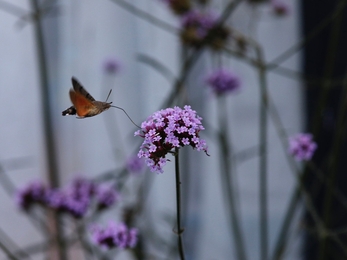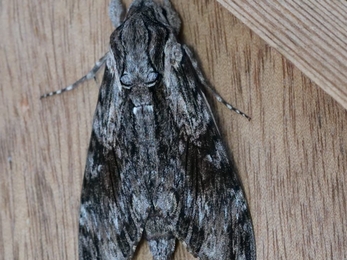A good run of migrants early in the month with a barred warbler at Huttoft Bank on 1st, numerous pied and spotted flycatcher throughout, whinchat and redstart at Huttoft Pit 5th, and a wood warbler at Wolla Bank on 7th. The wood warbler in particular was an excellent sighting and the first record for many years; this is a breeding species found in mature oak woodlands in North Wales and the Scottish Highlands.
Lincolnshire Coastal Country Park - September 2021
Snipe (c) Garry Wright
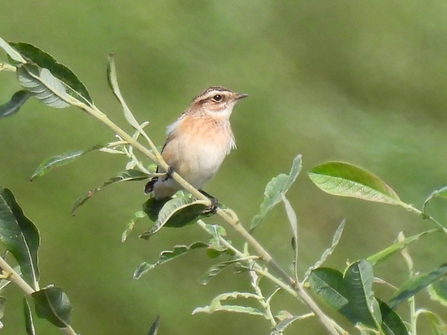
Whinchat – an annual passage migrant in spring and autumn that breeds on moorland and heathlands in north areas of the UK. © Garry Wright
Sea watching during the month resulted in numerous sightings of long-tailed skua which included as many as 12 birds on the 4th and daily sightings subsequently. Other records have included regular pomarine skua, arctic skua, great skua, all three diver species and a mix of waders and wildfowl. The number of incoming winter wildfowl has increased as the month progressed with species such as wigeon, teal and pintail. Sandwich tern numbers are now beginning to dwindle away with typical counts of 50-100 recorded daily.
An impressive group of nine spoonbill flew north over Wolla Bank on 17th September. This is undoubtedly a new record count for the Lincolnshire Coastal Country Park. Now breeding populations are starting to establish in several neighbouring counties sightings are becoming much more frequent in recent years.
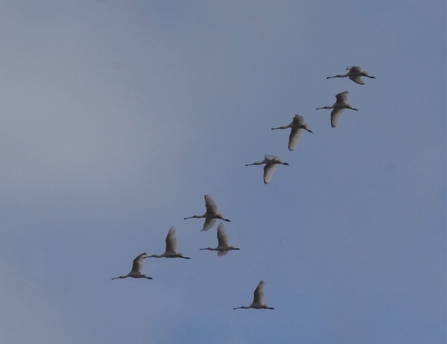
Spoonbill – a record count of nine over Wolla Bank. Numbers continue to increase in recent years as breeding populations establish in neighbouring counties. © Dick Lorand.
The first pink-footed Goose of the autumn was noted on 20th September with a group of 20 over Sandilands Pit. The sight and sound of the first pink-footed goose is always a good indicator of autumn. Breeding in Greenland and Iceland along the arctic tundra, they will be making their way to wintering grounds on the North Norfolk Coast, Holkham estate regularly supports over 30,000 birds in the winter months (well worth a visit at dusk!). Some birds do linger on the Lincolnshire coast in varying numbers and the Humber estuary holds internationally important numbers.
The birds seen migrating through the Lincolnshire Coastal Country Park will predominantly be birds heading to North Norfolk, the peak count included 2,040 south on 24th September; with regular triple figure totals reported daily. On several dates birds were seen migrating far out to sea making a bee-line straight for the Norfolk coast and therefore cutting across The Wash rather than following the coast to conserve energy.
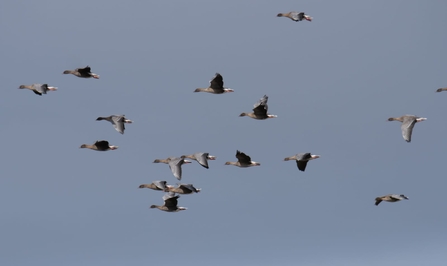
Pink-footed Goose – good numbers of birds passing through the area on route to wintering grounds in North Norfolk. © Dick Lorand
A bittern was recorded at Huttoft Pit on three dates towards the months end. This is the third record in 2021 after two consecutive years of no sightings in 2019 and 2020. Hopefully this species will start to breed in the future.
Kingfisher sightings also picked up at Huttoft Pit with daily sightings including a group of four birds together. A jack snipe in front of the hide on 29th was feeding alongside three common snipe.
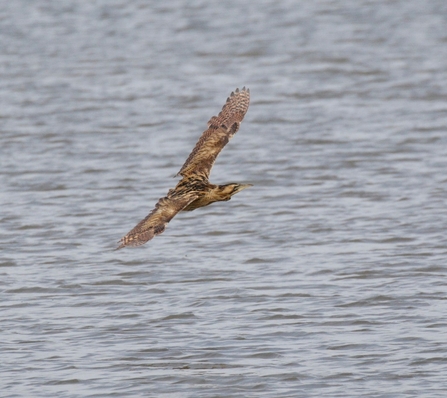
Bittern – the third sighting of 2021 after no sightings in 2019 and 2020. © Garry Wright.
A few summer migrants continue to linger such as swallow and house martin. Most of the breeding marsh harrier’s have now departed with only occasional sightings. Large wintering roosts of marsh harrier occur in the Norfolk Broads and can peak at over 100 birds. The Lincolnshire Coastal Country Park typically hosts one or two wintering marsh harrier depending on the weather; in adverse weather they may move south for the winter or linger in the area during milder winters.
At Wolla Bank, a small starling roost has started up with numbers around 4,000 to 5,000 at the end of the month. As the autumn and winter progresses this number will continue to grow. In winter 2020 they peaked at a staggering 120,000. Will this be repeated in 2021?
Non-avian highlights
A hummingbird hawkmoth was seen in a private garden in Sutton-on-sea on 10th and a convolvulus hawkmoth trapped in a moth trap in a private garden in Huttoft. Convolvulus hawkmoth is a hawkmoth from Europe and very small numbers arrive in the UK annually in the autumn; this is a spectacularly large hawkmoth with a wingspan reaching over 12 centimetres. Hummingbird hawkmoth breeds in the UK but coastal records could include migrants from Europe and even North Africa.
A harbour porpoise was sighted off Marsh Yard on 27th and was the only record in September despite lots of time sea watching by many observers.
Butterfly species were limited to red admiral, speckled wood, small copper and large white with the summer now drawing to an end. A brown argus was seen at Huttoft Pit mid-month and is likely to be the first record for this reserve.
Dragonfly and damselfly species, similarly to butterflies, were limited to migrant hawker, common darter, ruddy darter and willow emerald.
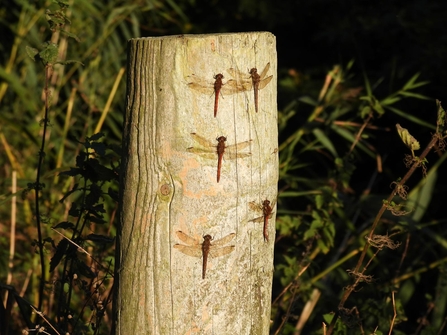
Common darter – sheltered fence posts in the sun often attract warmth loving insects. © Garry Wright
Five species to look for in October
- Whooper swan – fresh in from Iceland these swans often turn up from mid-October. Wintering in varying numbers on farmland around Huttoft Pit and many others passing through to wintering grounds on the Ouse Washes. Listen out for their ‘honking and whooping’ calls as they migrate through the area and their diagnostic yellow bills. .
- Yellow-browed warbler – a very scarce migrant bird only 10 years ago, the yellow-browed warbler is now a regular migrant on the east coast in autumn and in the right conditions can be the most numerous warbler present. Easterly winds are essential to bring these migrants in from breeding grounds in Asia. Look out for them in willow trees which they tend to favour. Marsh Yard and Chapel Six Marshes are reliable places to see them most years.
- Snipe/jack snipe – the cut area of reedbed in front of the hide at Huttoft Pit is often good for views of our snipe species. Snipe will be the most numerous with occasional sightings of jack snipe. October is usually the best time of year to see the latter. Jack snipe tend to be more brightly coloured than snipe, have a shorter bill and have a characteristic bobbing action while feeding.
- Willow emerald – as their name suggests this species favours willow trees and can be seen in area where this species grows. Warm days are often best if you manage to locate any willow trees in sheltered areas out of the wind. Huttoft Pit is an excellent place as is Chapel Six Marshes.
- Red admiral – a widespread butterfly that is often on the wing until early November. Look out for this species anywhere. The coastal footpath between Wolla Bank and Anderby Creek on warm days should produce some sightings.


